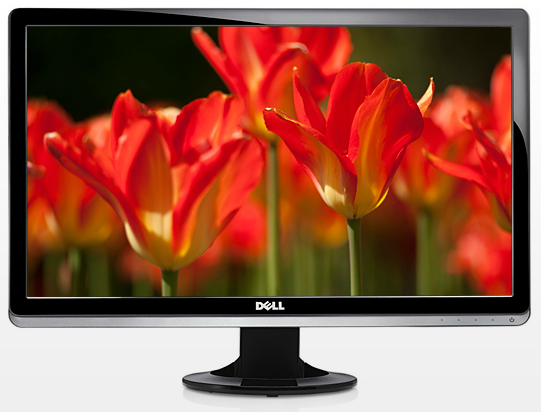Acer, Dell, LG, And Samsung: Four 23" LCD Monitors, Rounded-Up
23” LCD Round-Up: Mixed Results
As a TN-based display, Dell’s S2330MX pleasantly surprises us with great color production, even besting the more recognizable U2412M. It still suffers from some of the issues inherent to inexpensive TN-based monitors, though. Uniformity isn’t great, and the viewing angles are rather forgettable. Plus, if you don't plan to calibrate your display, you’ll experience a significant amount of color shift because the default color profiles aren’t anywhere near what we consider accurate.
If you're on a budget, it’s hard to beat the Acer S231HL Bid’s $150 price tag. While color production and contrast are poor, input lag is very low. For $30 more, though, the S2330MX does seem like a better purchase for $180. Unfortunately, that also means stepping down from Acer's impressive three-year warranty coverage to Dell's one-year guarantee.
Meanwhile, LG’s IPS236V and Samsung’s S23A550H tie somewhere in the middle for color production. We weren't expecting that since the former employs an IPS panel, while the latter is TN-based. But the IPS236V uses an older variant of the technology known as S-IPS, which can't deliver the same impressive results as H-IPS or p-IPS panels.
Color production aside, the S23A550H is probably the best-looking TN-based display. It boasts decent uniformity and the best viewing angles of the three competing screens employing similar panel technology. Kudos to Samsung for combating weaknesses we might have expected.
On the other hand, LG's IPS236V exhibits traits common to IPS panels: great viewing angles and poor contrast. The inability to produce deep blacks is a particular annoyance to multimedia buffs because the blacks appear as dark grays.
In the end, Samsung and LG demonstrate different strengths. We’ve seen both monitors hover around $200 thanks to special sale prices. But, on a regular day, the IPS236V costs $250 as a result of the premium tied to its IPS panel. As we stated earlier, paying more doesn't always mean getting more, which is why you consider your needs carefully before heading to the checkout counter.
Current page: 23” LCD Round-Up: Mixed Results
Prev Page Response Time, Input Lag, And Final WordsGet Tom's Hardware's best news and in-depth reviews, straight to your inbox.
-
compton I thought the LG used not S-IPS but e-IPS, 6 bit + AFC. I actually thought it was almost identical to the CCFL backlit Dell U2311H (except the module is for LED backlight in the LG's case, not CCFL).Reply
I guess I was wrong. -
klyzet Im not sure if that input lag test is accurate.Reply
Why dont you guys test it the usual way? with a CRT monitor side by side running a timer (with ms ofc) and take some photos? -
illusiongamer12 why no review a viewsonic monitor they have a 150$-180$ monitor with these same specsReply -
tlmck Also noticeably absent is the ever popular ASUS brand. I don't have one myself, but it seems a lot of people do. Would have been an interesting comparison.Reply -
Eman25th Can anyone tell me why the prices haven't dropped? i bought my asus 24" screen 2 years ago for 178$Reply -
acku Reply9527531 said:I thought the LG used not S-IPS but e-IPS, 6 bit + AFC. I actually thought it was almost identical to the CCFL backlit Dell U2311H (except the module is for LED backlight in the LG's case, not CCFL).
I guess I was wrong.
LG's QA website. -
kyuuketsuki I own the LG IPS236V, and I find your numbers completely non-believable. The contrast ratio is not that abysmal, and it can reproduce decent (though not the best, I admit) blacks. Also, on a review of the IPS226V, while being the 22" model, it is otherwise identical, and DigitalVersus found it to have a contrast ratio of over 1000:1. I'm wondering where the huge disparity in numbers is coming from, and I don't think it's DigitalVersus mussing things up.Reply
Question: did you go into the Menu > Picture and change the Black Level setting to Low? It defaults to High for some unknown reason, and at that setting the blacks are indeed terrible. At Low, the blacks are much, much better, and the slight decrease in white levels isn't much of an issue given that this is an extremely bright monitor. -
acku Reply9527539 said:I own the LG IPS236V, and I find your numbers completely non-believable. The contrast ratio is not that abysmal, and it can reproduce decent (though not the best, I admit) blacks. Also, on a review of the IPS226V, while being the 22" model, it is otherwise identical, and DigitalVersus found it to have a contrast ratio of over 1000:1. I'm wondering where the huge disparity in numbers is coming from, and I don't think it's DigitalVersus mussing things up.
Question: did you go into the Menu > Picture and change the Black Level setting to Low? It defaults to High for some unknown reason, and at that setting the blacks are indeed terrible. At Low, the blacks are much, much better, and the slight decrease in white levels isn't much of an issue given that this is an extremely bright monitor.
Gamma set to 2.2. We did set to low. And as you know we measure luminance (nits) not illuminance (lux). Maybe this unit sat in the review pool too long... Not sure, but those were the readings that we achieved.
